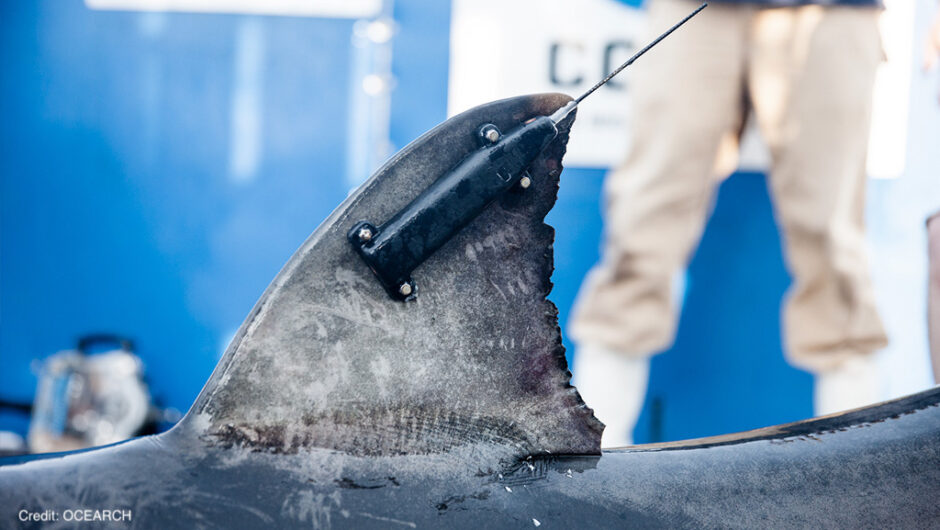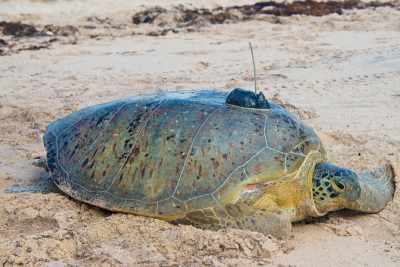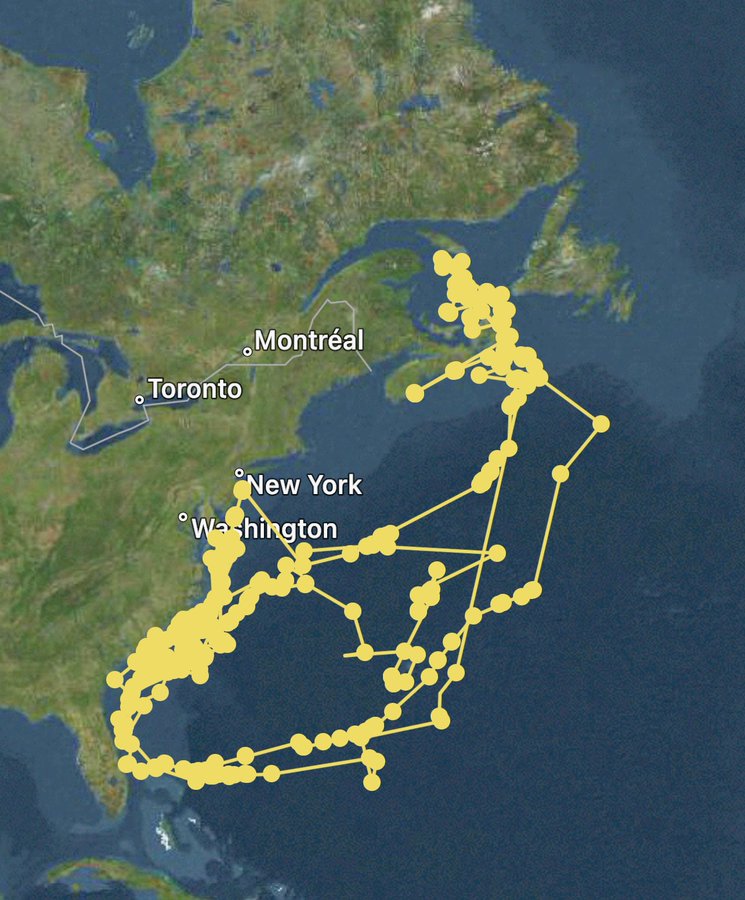GPS Marine Animals
GPS Tracking
Monitoring marine animals from land is challenging as they spend most of their time underwater! However satellites can track marine animals around the world if they are fitted with Global Positioning System (GPS) tags.
Tagging marine animals allows scientists to gain insights on their range, migratory routes, ocean usage, and feeding behaviours. As the climate emergency intensifies, this information is vital for understanding how changing ocean conditions—such as warming and acidification—are affecting migration, feeding patterns, and the size of marine populations. The data can also help inform decisions around creating marine protected areas to help conserve areas of importance such as breeding, nesting and nursery grounds.
GPS trackers only work within a certain depth range. When animals pop up to the surface of the water, the satellites can collect data on where they are before they dive down again. Tags are often attached to shells or fins that frequently break the water’s surface. For animals that spend most of their time underwater, GPS tags can still be useful. These tags store data for a set period and then automatically detach, floating to the surface where satellites can pick up the stored information.
Marine animals tracked using GPS devices include turtles, sharks and whales.

Research into the behavior and life cycle of marine turtles has shown they do not generally nest and feed in the same area, but are in fact highly migratory, often traveling hundreds or even thousands of miles between the beaches where they lay their eggs and the feeding grounds where they spend much of their time at sea.
“This is where the technology of satellite telemetry becomes useful and important in protecting sea turtles. Satellite telemetry has advanced to the stage of allowing researchers to track turtles in the open ocean after attaching a satellite tracker known as a Platform Terminal Transmitter (PTT) to the back of a sea turtle. The PTT sends a signal full of information to an orbiting satellite each time the turtle surfaces for air. The satellite re-transmits the data to a receiving station on earth, which researchers can access through their computer. Generally, after about a year the transmitters quit working and fall safely off the turtle. A Sirtrack PTT, attached with fiberglass and resin, to the shell of a green sea turtle” Sea Turtle Conservancy

OCEARCH

OCEARCH is a non-profit organisation dedicated to the study and conservation of marine life. They are best known for its global shark-tracking efforts, they capture, tag, and release sharks with satellite transmitters that allow researchers and the public to track their movements.
OCEARCH’s mission is to accelerate the ocean’s return to balance and abundance by supporting scientists in collecting previously unattainable data in the ocean.
Breton the Great White Shark tagged by OCEARCH in 2020 off the coast of Nova Scotia, found fame in 2022 when satellite images showing his movements around the North American coast, resembled the outline of a shark. He had effectively drawn a self portrait!
You can join the adventure and track marine life in real-time using GPS signals at OCEARCH Tracker

The shark’s “head” is a series of tracking points along the coast of Florida and the Carolinas, with the “dorsal fin” coming up around Washington DC and New York area. His “tail” is a long, curved path out into the Atlantic and back up to Nova Scotia where he was originally caught and tagged.
Links to further information:
SeaTag™ Marine Mammals Tracking System
Tracking endangered sea turtles with hardware the size of a pound coin
Sea Turtle Tracking: How it Works – Sea Turtle Conservancy (conserveturtles.org)
